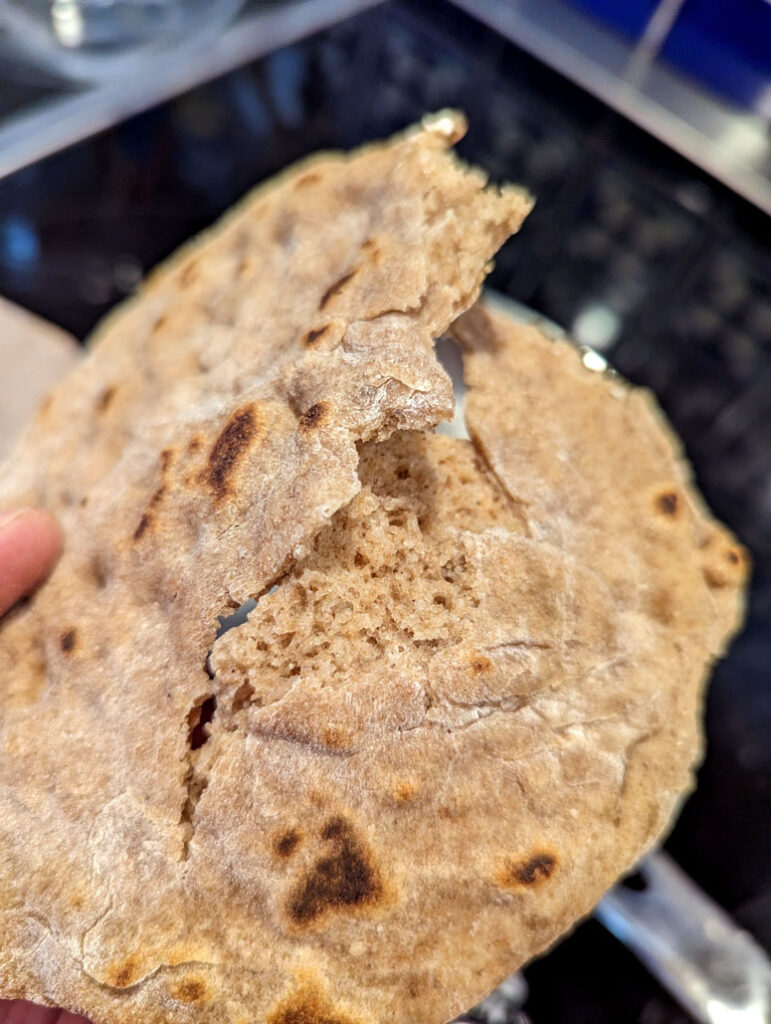Stovetop bread, on induction, electric, or gas — with a video!

In all my books, I call this fast and delicious flatbread “naan,” which is a specialty from India, but truth be told, it isn’t really naan, because the authentic article is made in a massive ceramic oven (“tandoor”), and the flatbreads are slapped onto the sides of its huge bowl-shaped surface and cooked over charcoal. My version is from page 260 of “The New Artisan Bread in Five … .” For those of us who don’t have a tandoor at home, we can still make chewy, fragrant flatbreads in a skillet, right on the stovetop. I’ve done it on gas, electric, and induction stovetops, but I’m going to put in a brief plug for induction, because I recently got one, and I’m in love with it. It’s instant-on, rapidly responsive, and very, very stingy with energy and carbon emissions. This is part of the electric transition that is probably in all our futures and that my family has started trying to make. Induction is nothing like traditional radiant electric stovetops — it’s actually better than gas, by a lot, despite persuasive advertising from the gas industry, since the 1930s which brought us the wacky expression, “Now you’re cookin’ with gas!” I was a gas diehard … until I tried induction at a friend’s house. Melissa Clark had a great article on this last year if you’re interested in learning more. But this bread, which doesn’t care what kind of stovetop you use, is fast and delicious, and stovetop cooking doesn’t heat up your kitchen like an oven, so it’s a great choice for the upcoming warm weather (someday soon, fingers crossed, even here in Minnesota). Read on …
Thank You Jeff,
Now I know of induction stove tops (new to me), and now I will try flat bread (sounds easy).
I am a long time follower of BI5 and do miss the continuing questions and answers
Alan
Great, let me know if you have any questions as you try this. Question for you though, when you say ” Miss the q&A”, I’ve been doing it all along. Are you finding that the q&A isn’t displaying on your interface?
I can’t wait to try this. When I take the appropriate amount of dough, is it right from the bucket that’s been in the refrigerator? Do I need to let it rest before shaping it?
Thank you!
No need, flatbreads are more forgiving this way, just go for it!
I saw you are using your recipe from New Bread in 5 book. Do you prefer this naan to the one in your Flatbread in 5 or was it more a matter of convenience?
It’s strictly a matter of convenience and preference. You can make a flat bread in a pan with pretty much any kind of dough from my books
As an experienced home baker, I think it is an important skill to be able to make bread without an oven. Flatbreads and skillet breads (such as oat farls) are a time-honored option in a number of cultures. At the beginning of the war in Ukraine, when seeing the devastated people trying to cook for themselves in the street after their homes were destroyed, made me wonder if bread could be made without baking. So I studied bread making alternatives from as many cultures as I could find such as Chinese, British, African, and early American. These people do (or did) not have ovens and learned to steam their breads. Steaming bread (most any recipe) has become a happy standard for me. Every new bread I try, I bake part of it and steam part of it to see which I prefer. They both have their advantages, both yeasted and quick types. Richer recipes are generally better baked, leaner ones, steamed. Mug cake recipes benefit from steaming too. A minute in the microwave just isn’t enough time to do justice to the ingredients. I started out using empty chicken cans for all these things. I like the process so well, I’ve invested in silicone baking cups. Bread is a major comfort food for much of the world. It’s worth learning to make the most of it.
interesting…